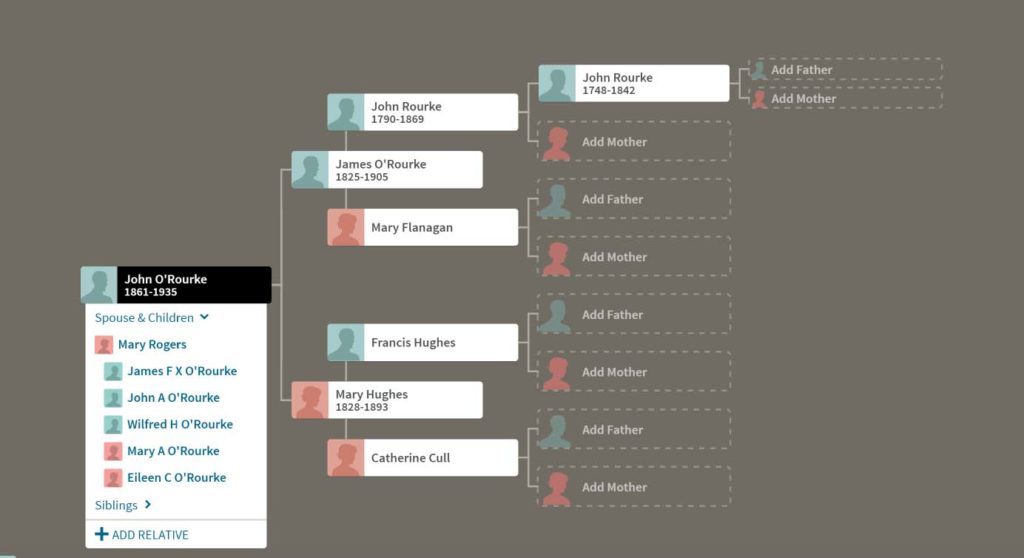
Recently, I was able to prove my three times O’Rourke great grandparents through a DNA match even though my match had no idea she had any O’Rourke’s in her ancestry. Not only was I able to finally verify my three times great grandparents names, I helped her add two more generations to her family tree.
In the O’Rourke branch of my tree going back past my two times great grandparents has proven difficult. I have not been able to locate my two times great grandfather’s James Rourke (O’Rourke) baptismal record in the Kilbroney church records in County Down. I have always made an educated guess as to who is parents were and it differed from what other family members thought.
There are two possible explanations why I can’t find James Rourke’s records. Several pages of the Kilbroney Parish church register are faded and his record may be hiding in there somewhere. The other explanation is that his parent’s never got around to baptizing him.
This is what I do know about James Rourke. He died in 1905 at the age of 80 in the townland of Ballintur in the Kilkeel civil registration district in County Down, so his birthdate must have been around 1825. He married my two-times great grandmother Mary Hughes in 1859, so he would have been about 34 years old. He had five children, his first born being my great grandfather John in 1861 and the last being my great grand uncle Francis in 1868.
I also used the Griffiths Valuation document to determine that his father’s name was John. In the Griffith’s Valuation, a John Jr. leased the same land until his death in 1869, when James Rourke took over the lease.


